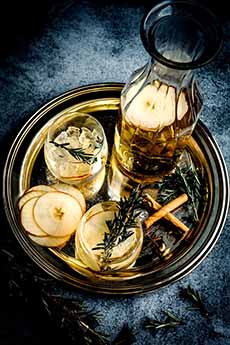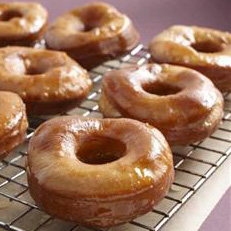Apple Cider Recipes & Apple Cider History For National Apple Cider Day
|
|
November 18th is National Apple Cider Day. Why not set up an apple cider bar and invite friends and neighbors? You set out the cider, spirits, mixers, and garnishes, and guests make their own. Don’t forget the cookies: Gingersnaps and snickerdoodles are great with cider. There are also apple cider cookies with nuts and raisins, and of course, apple cider donuts. Check it out! Or, go directly to the hard cider. Here’s how to plan the cider party, and a list of some hard ciders to try. Also, what to know about hard cider. You can also plan a cider tasting party for Mother’s Day or Father’s Day. So dig in…and if you don’t have time to cook or mix a cocktail, enjoy fresh or hard cider straight. Another occasion to celebrate: World Cider Day is June 3rd. > What Is Hard Cider? Food
Wild apple trees originated in the mountains of Central Asia. The center of diversity of the genus became eastern [present-day] Turkey. The apple tree may have been the earliest tree that humans cultivated (the history of apples). Over the millennia, through selective breeding, farmers improved the fruits [source]. When the Romans invaded England around 55 B.C.E., they found the local Celts cultivating apple orchards and drinking apple cider. The original apple varieties weren’t for eating. They were bitter, so were pressed for their juice and left to ferment into alcohol. The Romans immediately embraced the drink, and cider quickly spread through the Roman Empire and across Europe: from the Germanic tribes to the east, to the Normans in the south (northern France). When the Normans invaded England in the 9th century, they returned to Normandy with the rootstock to grow their own apple orchards and left behind the word “cider” for the English language [source]. Everyone drank cider or beer: adults and children alike. Due to unhealthy water sources, it was the safer choice. Fast forward: Colonists brought apples to North America in the 17th century—the bitter cider apples. Apples were being grown in Massachusetts as early as 1630. At the end of the 18th century, Johnny Appleseed traveled west to spread apple trees for cider. As in Europe, cider or beer was drunk instead of water. Mutations were continually creating new breeds of apples. The McIntosh mutation was discovered in 1796, by a farmer named John McIntosh. It was sweeter, and was best for eating rather than fermenting. More sweet mutations followed, and today, we have as many varieties of sweet apples as cider apples. When English settlers arrived in the Americas, they planted apple trees with the hopes of making [alcoholic] cider. It was a necessity: All water sources potentially harbored waterborne diseases that could be deadly for the family or community. Beer, the common alternative to harmful water in Europe (for adults and children alike), wasn’t an option. The climate wasn’t suited to growing the barley, wheat, and rye essential for brewing beer. But apple trees adapted to the New England climate, and apple cider became the standard drink for everyone including children. Children were often served a watered-down version of cider called ciderkin or applekin. The average family at the time consumed 90 gallons of cider each year [source]! The apples were also made into cider vinegar, which was essential in pickling and preserving food. Cider spread beyond New England, of course. Cider was considered to be exceptionally valuable in early America and even became an acceptable payment for work. Virginia planter William Fitzhugh noted around the late 1670s that his 2,500-tree orchard and the cider it produced was as valuable as 15,000 pounds of tobacco—then Virginia’s top cash crop. As most Americans know, in the early 19th century, John Chapman, better known as the “Johnny Appleseed,” made his fortune from growing apples. By planting temporary tree nurseries throughout unsettled areas in the Midwest, Chapman was able to sell families bound for the West, established apple trees ready to plant and yield crops. During the latter 19th and early 20th centuries, the Temperance Movement and subsequent Prohibition lessened, then ended, the demand for hard cider. While non-alcoholic cider endured (it is pressed from sweet, not cider, apples), many cider apple orchards were cut down or burned during Prohibition (1920 to 1933). After Prohibition’s end, apple cider orchards remained limited: The cost involved in planting new orchards wasn’t paid back by the limited demand for cider. Farmers who did stick to growing apples switched to the sweeter varieties that are used for baking and fresh apple juice [source]. Over the last 20 years, craft brewers have revived the art of cider brewing. Seeing the trend, the Angry Orchard hard cider brand was launched in 2012 by the Boston Beer Company, brewers of Samuel Adams beer. |
|
|
|
||






